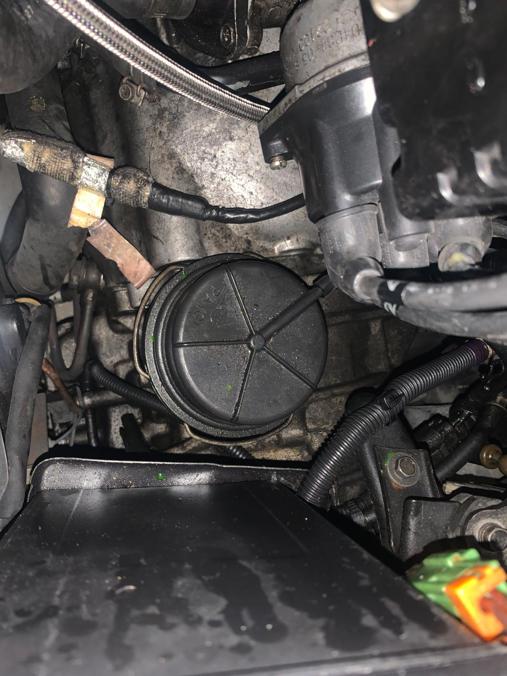A long-termer of a different kind, in part one we located, negotiated, trepidated and eventually relocated this 1991 Pale Blue Nissan Figaro from Auckland to Hamilton. It had developed a bad habit of smoking heavily, as its turbo was well and truly gone… or so we thought.
But this little Figaro was otherwise very sound, being well-cared for, garaged and a lot of maintenance money spent on it: more than $7000 by the previous owner, the paperwork showed.

The roof retreated perfectly, the tyres were new for its last Warrant of Fitness, and completely void of undercarriage rust, the biggest Figaro concern. After trailering and unloading it in Hamilton, a new turbocharger was ordered.

Positively tiny, the 1.0-litre engine doesn’t pump much air, so the little turbocharger needed to come off and either get rebuilt or replaced. Local NZ places proved prohibitively expensive to merely rebuild, so I found a brand new Hitachi HT07-B turbocharger overseas; and while not cheap, well over $1000 landed, it was sitting on the doorstep within 48 hours of ordering it. That alone was truly remarkable given it takes NZ Post seven days to send a letter from Auckland to Hamilton.

So, with the turbo sitting front and centre in the engine bay, the small forward-flipping bonnet was whipped off for better access and the work begun. Intake tubes, coolant lines, oil feed and drain tubes and exhaust pipes were all unscrewed, unbolted, unwound and unhinged to allow the failed turbocharger to be freed of its home; in its place the new unit, with new gaskets, bolts and a brand new oil feed line, as the small factory line is prone to clogging over time.

Eight hours of labour later, it all went largely smooth. The new turbocharger brought a second life to the smoky old Figaro, and with a new battery fitted and a new oxygen sensor, the four-cylinder fired into life, quickly settling into a smooth, if slightly high idle… but not idling for too long, as the water temp gauge wasn’t working.

With Drive selected, little Figgy drove out onto the road again under its own new turbocharged power, clearing out the remnants of the oil in the exhaust with a few puffs of smoke. With a whistle of boost from the turbo, the throttle pedal went down properly for the first time… and the same cloud of white oil-burning smoke pumped out the exhaust. Huh?! Have to admit to a few questioning expletives at that moment. It was slightly better, but far from perfect.

Back in the garage and another basic systems check: the engine oil had always been fresh, but a little tricky to read the level. After about 10 dry and dips, it eventually because clear that the engine oil was overfilled, by quite a lot: so the sump was drained. A Figaro oil sump takes around 3 litres, so it was quite the surprise to see more than five litres come out! Refilling to the proper dipstick F line, out it went for another test drive. Better, again, but it’s STILL smoking out the exhaust: confused, vacant stares…

A frustrated phone call to my retired mechanic dad in Sydney, and he suggested the gearbox might have an old style diaphragm, which draws oil into the intake if it’s overfull; he was partly right. The three-speed Figaro auto uses a breather called a governor, and its vacuum line was indeed plumbed to the intake.
So, the auto trans was also drained, and, again, out came a lot more oil than should have. Over 1.3 litres more. This was being drawn into the intake, where it burnt and churned out thick plumes of smoke out the exhaust. So, also, that was refilled to its dipstick full line.

Eureka! Test driving the Figaro with the new turbo, and correct engine and gearbox oil levels cleaned it up completely, and the engine was running better, smoother and even sounding sweeter. But not perfect. After lots of research and emails, I discovered that breather vacuum line should not be connected to the intake, but instead simply vent to atmosphere… it is a breather pipe, after all. So job done, and the other end found its rightful home back to the carbon cannister.

The idle speed instantly became smoother, and it didn’t flare up after a drive: but it was still high, so was simply adjusted via the idle screws to bring it down to the target of 950rpm, both in Park, and in gear under load from the AC and headlights. Presto!
Lastly, after locating the water temperature sensor hidden under the distributor, something as simple as a popped-off and reattached plug brought the water temp gauge straight back to life.
So, our Figaro is running like a dream again: one big job done, lots of little ones to come.













